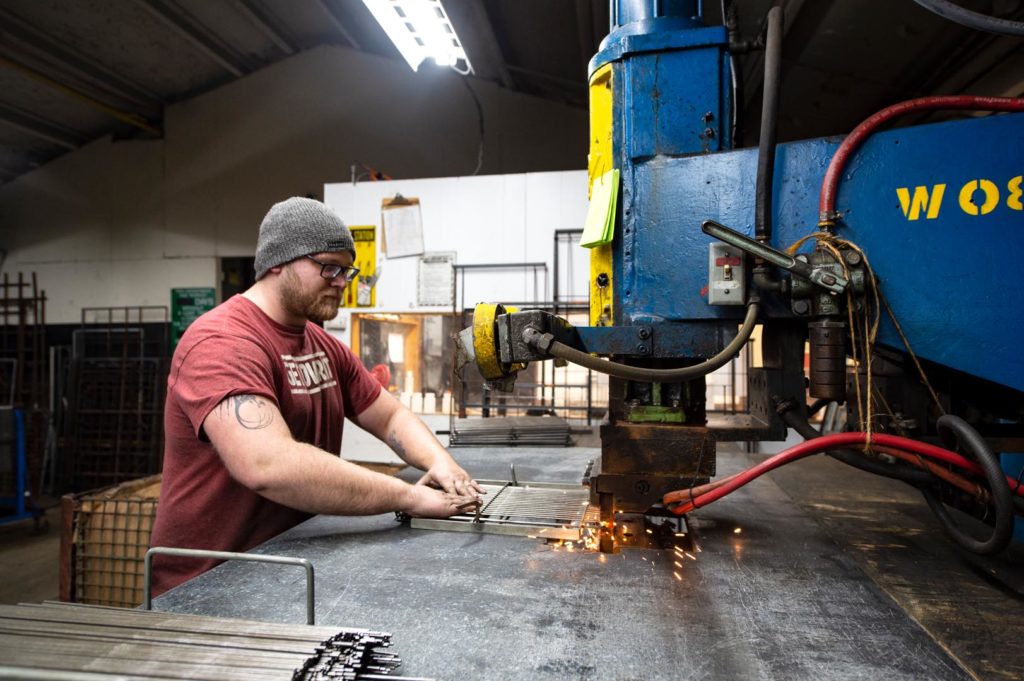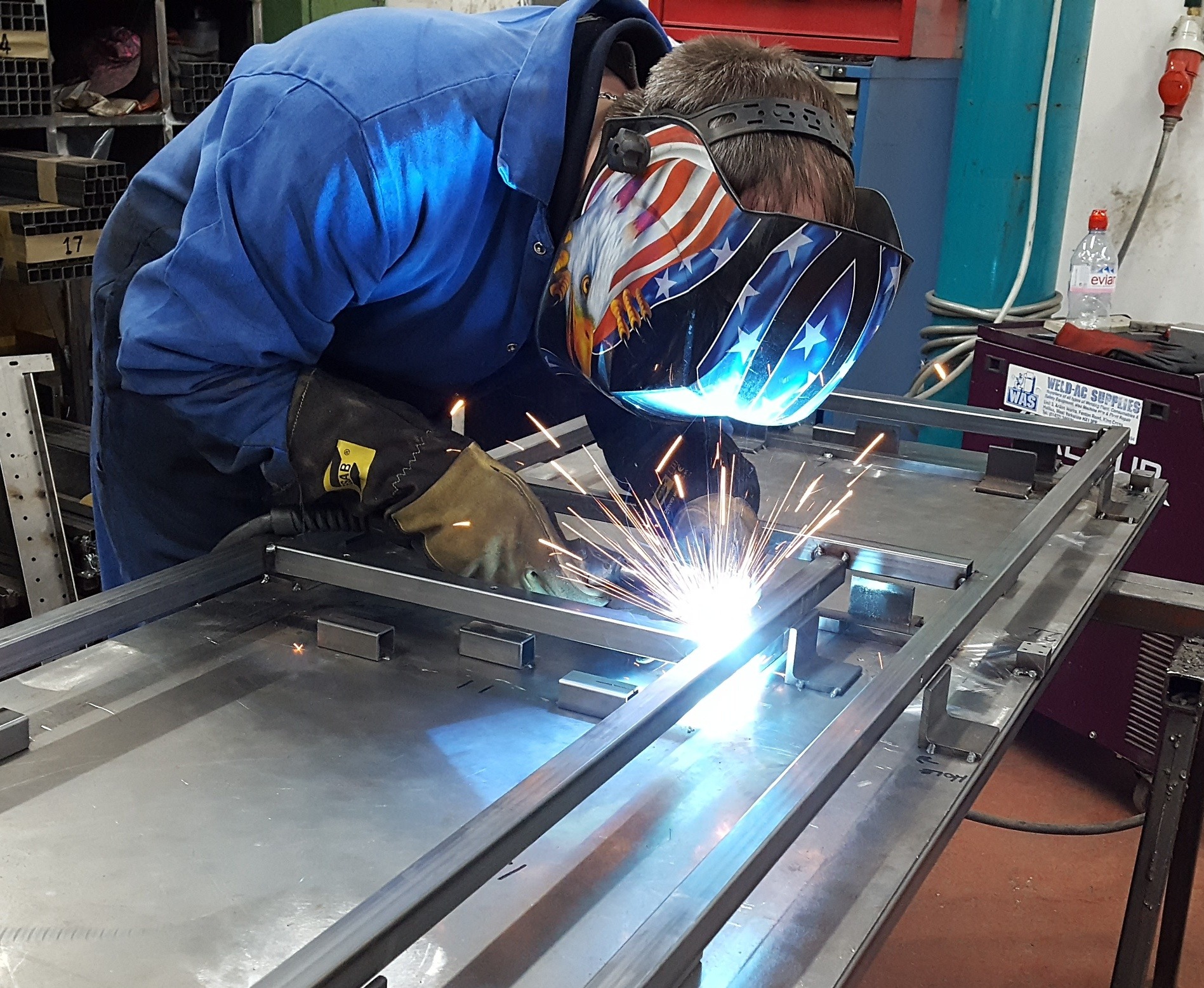Most common welding failures and their fixes by Montana Mobile Welding and Repair Belgrade Fabrication
Usual Welding Repair Work Issues and How to Address Them Efficiently
Welding repairs typically run into a variety of problems that can jeopardize the honesty of the end product. Typical problems consist of insufficient infiltration, porosity, and imbalance, to name a few. Each defect provides one-of-a-kind difficulties that require particular strategies for resolution. Recognizing these problems is essential for welders aiming to enhance their results and abilities. This conversation will certainly check out these typical welding repair service issues and reliable approaches to resolve them.
Insufficient Infiltration
Inadequate infiltration occurs when the weld steel stops working to completely fuse with the base material, causing weak joints and prospective architectural failures. This problem often originates from inadequate heat input, inaccurate electrode angle, or incorrect welding rate. Welders might experience inadequate infiltration as a result of a mistake of the needed criteria for a particular product thickness or type. Additionally, contamination on the base product's surface can prevent efficient bonding, intensifying the issue. To deal with inadequate infiltration, welders should guarantee appropriate settings on their equipment and preserve a tidy job surface. Regular examination of welds is suggested to determine any deficiencies early, permitting for prompt corrections and the avoidance of compromised architectural integrity in welded settings up.
Porosity
Porosity is a typical defect in welded joints that manifests as tiny gas bubbles caught within the weld metal. This issue can compromise the stability of the weld, leading to minimized stamina and potential failure under tension. Welding. Porosity typically occurs from contamination, moisture, or inappropriate welding techniques, which allow gases to escape right into the liquified weld pool. To resolve porosity, welders need to assure appropriate surface prep work, maintain a clean working environment, and make use of suitable welding parameters. In addition, picking the best filler product and shielding gas can minimize gas entrapment. Routine evaluation and screening of welds can assist recognize porosity early, guaranteeing prompt restorative activities are taken, therefore maintaining the high quality and integrity of the bonded framework
Imbalance
Misalignment in welding can develop from different variables, including incorrect arrangement and thermal expansion. Understanding the source is essential for efficient resolution. A number of correction methods are available to realign elements and guarantee architectural honesty.
Sources of Misalignment
Welding imbalance usually stems from a selection of underlying concerns that can endanger architectural integrity. One key reason is inappropriate fit-up of parts before welding, which can cause spaces and uneven surfaces. Variations in thermal growth during the welding procedure can likewise lead to distortion, specifically if the materials being signed up with have different coefficients of expansion. Furthermore, poor clamping and fixturing might fall short to hold parts safely in position, leading to activity during welding. Badly kept tools, consisting of welding devices and tools, might introduce disparities in the weld bead, further adding to imbalance. Lastly, driver mistake, originating from not enough training or experience, can additionally play a significant function in creating misaligned welds.
Improvement Techniques Readily Available
Attending to misalignment efficiently needs a mix of restorative techniques customized to the certain issues at hand. One typical technique is using jigs or components to hold elements in the appropriate setting throughout welding, making certain constant alignment. Additionally, pre-heating the products can assist minimize distortion and improve fit-up. For significant imbalance, mechanical adjustment strategies, such as using hydraulic jacks or clamps, can be employed to correct the placement before welding. Post-weld heat therapy might also be required to ease anxieties triggered by imbalance. Lastly, cautious inspection and change throughout the setup stage can avoid misalignment problems from coming to be considerable troubles, promoting a smoother welding process and boosting general structural honesty.
Distortion
Distortion is a typical challenge in welding that can emerge from various variables, including uneven heating and air conditioning. Recognizing the reasons for distortion is vital for executing reliable avoidance strategies. Addressing this problem not only enhances architectural stability however likewise enhances the total quality of the weld.
Causes of Distortion
When subjected to the intense warmth of welding, materials usually find go through modifications that can lead to distortion. This sensation mainly arises from thermal expansion and contraction during the welding process. As the weld location warms up, the material expands; upon cooling, it acquires, which can develop inner stresses. In addition, uneven home heating throughout a workpiece can exacerbate these stresses, resulting in bending or flexing. The kind of material also plays a substantial duty; metals with differing thermal conductivity and coefficients of expansion might react in a different way, leading to uncertain distortions. Bad joint design and poor fixturing can contribute to imbalance during welding, increasing the likelihood of distortion. Understanding these reasons is important for reliable welding fixing and avoidance approaches.
Avoidance Techniques
Reliable avoidance methods for distortion during welding concentrate on managing heat input and ensuring correct joint design. Maintaining a constant heat input assists to reduce thermal development and contraction, which can cause distortion. Utilizing methods such as preheating the work surface can likewise minimize the temperature level slope, advertising uniform home heating. Additionally, selecting suitable joint styles, such as T-joints or lap joints, can improve security and decrease stress concentrations. Applying correct fixturing to safeguard the work surfaces in position additionally aids in preserving positioning during the welding process. Finally, staggered welding series can distribute warmth a lot more evenly, preventing local distortion. By using these methods, welders can greatly lower the probability of distortion and enhance the total quality of their welds.
Splitting
Cracking is a common issue experienced in welding repair work, frequently arising from different aspects such as incorrect cooling prices, product option, or insufficient joint preparation. The event of cracks can substantially compromise the honesty of the weld, bring about potential failures throughout operation. To address this problem, welders must first assess the source, guaranteeing that materials are compatible and suitably selected for the certain application. Furthermore, controlling the air conditioning rate throughout the welding procedure is vital; rapid cooling can induce anxiety and lead to fracturing. Appropriate joint style and prep work also add to minimizing the risk. Implementing these strategies can improve weld top quality and toughness, inevitably decreasing the likelihood of splitting in finished plasma cutter welder combo weldments.

Incomplete Blend
A substantial concern in welding repair services is incomplete combination, which happens when the weld metal does not adequately bond with the base product or previous weld passes - Fabrication. This problem can lead to weak points in the joint, potentially compromising the stability of the bonded structure. Factors contributing to insufficient fusion consist of not enough heat input, improper welding technique, and contamination of the surface areas being signed up with. To resolve this concern properly, welders should guarantee proper pre-weld cleaning and surface prep work, along with readjust their welding parameters to attain appropriate penetration and fusion. Routine inspection throughout the welding procedure can likewise assist determine incomplete fusion early, enabling timely rehabilitative steps to enhance the total high quality of the weld
Overheating
While welding repairs can boost architectural stability, overheating provides a considerable difficulty that can cause product deterioration. Excessive heat throughout welding can modify the mechanical residential or commercial properties of metals, resulting in minimized strength, increased brittleness, and bending. This phenomenon is specifically crucial in high-stress applications where architectural dependability is paramount. Identifying overheating can involve aesthetic evaluations for staining or distortion, along with keeping an eye on temperature level throughout the welding procedure. To minimize the dangers related to getting too hot, welders must employ ideal strategies, such as regulating warmth input, changing traveling speed, and making use of appropriate filler products. Furthermore, applying pre- and post-weld warmth treatments can help recover product residential or commercial properties and improve the general quality of the repair, making sure long-lasting efficiency and security.
Regularly Asked Concerns
What Are the Usual Indications of a Welding Issue?

Exactly How Can I Evaluate My Welds for High quality?
To examine welds for quality, one can utilize aesthetic inspections, ultrasonic screening, and radiographic methods. Each method assures architectural integrity, recognizes issues, and confirms adherence to specified criteria, inevitably improving the reliability of the bonded joints.
What Security Precautions Should I Take While Welding?
When welding, one ought to focus on safety by putting on ideal individual safety equipment, guaranteeing appropriate ventilation, securing flammable products away, preserving a tidy work space, and recognizing environments to stop injuries and mishaps.
Can I Repair a Weld Without Renovating the Entire Joint?
Fixing a weld without renovating the entire joint is feasible, depending on the damages (Montana Mobile Welding and Repair Belgrade Welding). Techniques such as grinding, including filler product, or making use of a welding procedure can effectively address details flaws while preserving the surrounding framework
What Equipment Are Important for Effective Welding Repairs?
Necessary tools for efficient welding repair services include a welding machine, cord brush, grinder, safety gear, clamps, and filler materials. Each device plays an essential duty in making certain top quality and security throughout the repair process. Porosity generally emerges from contamination, dampness, or inappropriate welding strategies, which enable gases to get away into the molten weld pool. Improperly conserved devices, consisting of welding machines and devices, might present variances in the weld grain, more adding to misalignment. When subjected to the extreme heat of welding, materials typically go through adjustments that can lead to distortion. Cracking is a common concern encountered in welding repairs, frequently resulting from various variables such as inappropriate cooling rates, product option, Read Full Report or inadequate joint preparation. A substantial problem in welding repair work is incomplete combination, which happens when the weld metal does not effectively bond with the base material or previous weld passes.